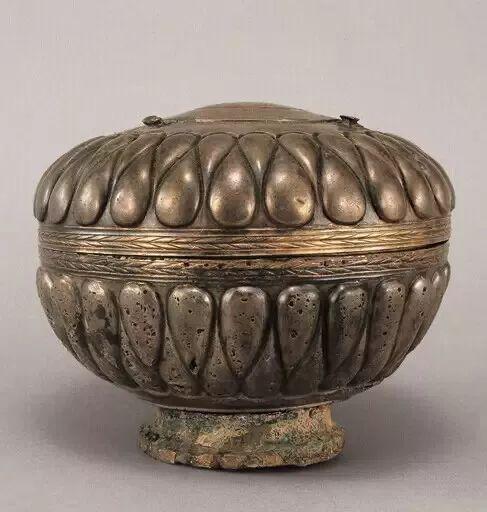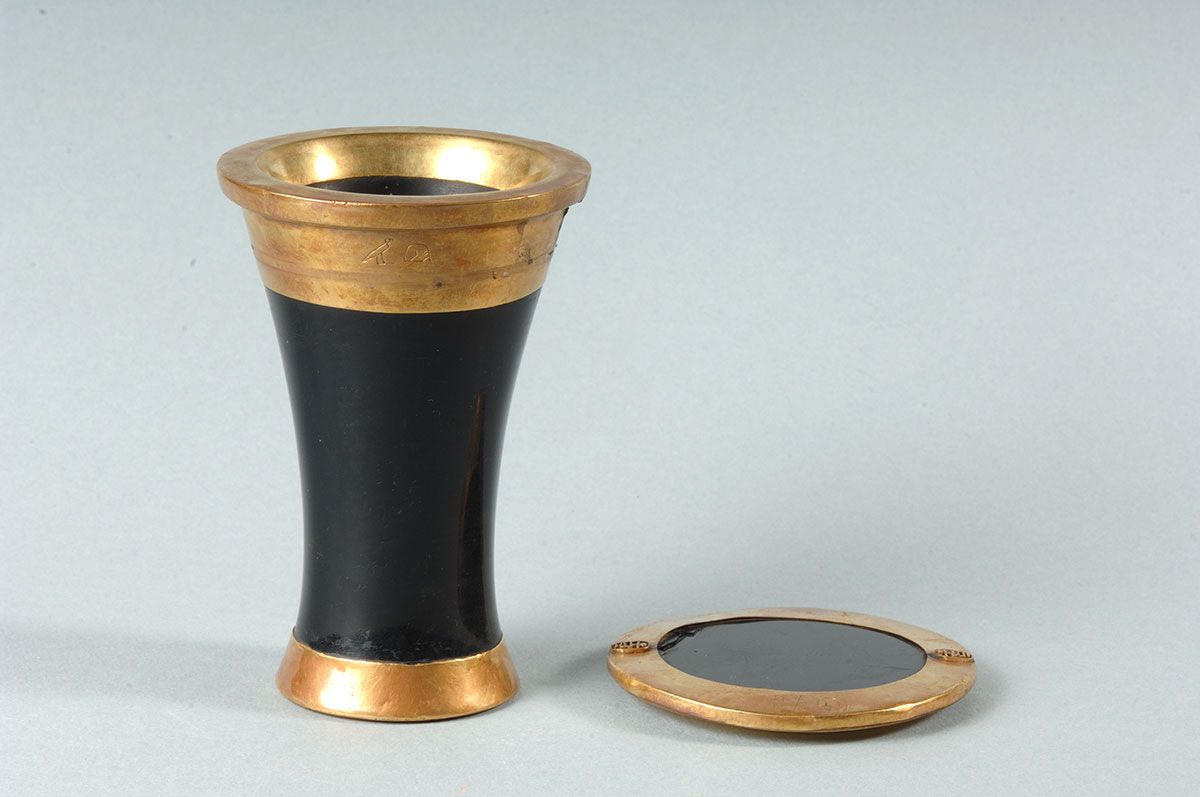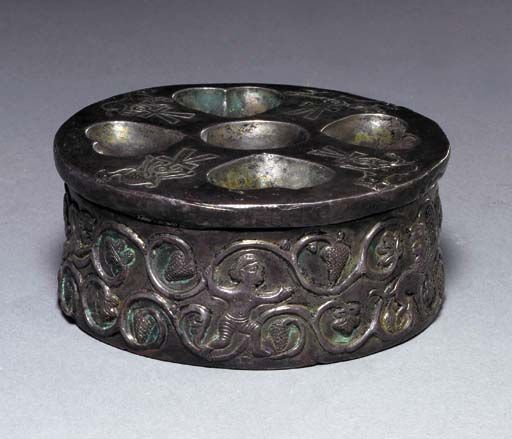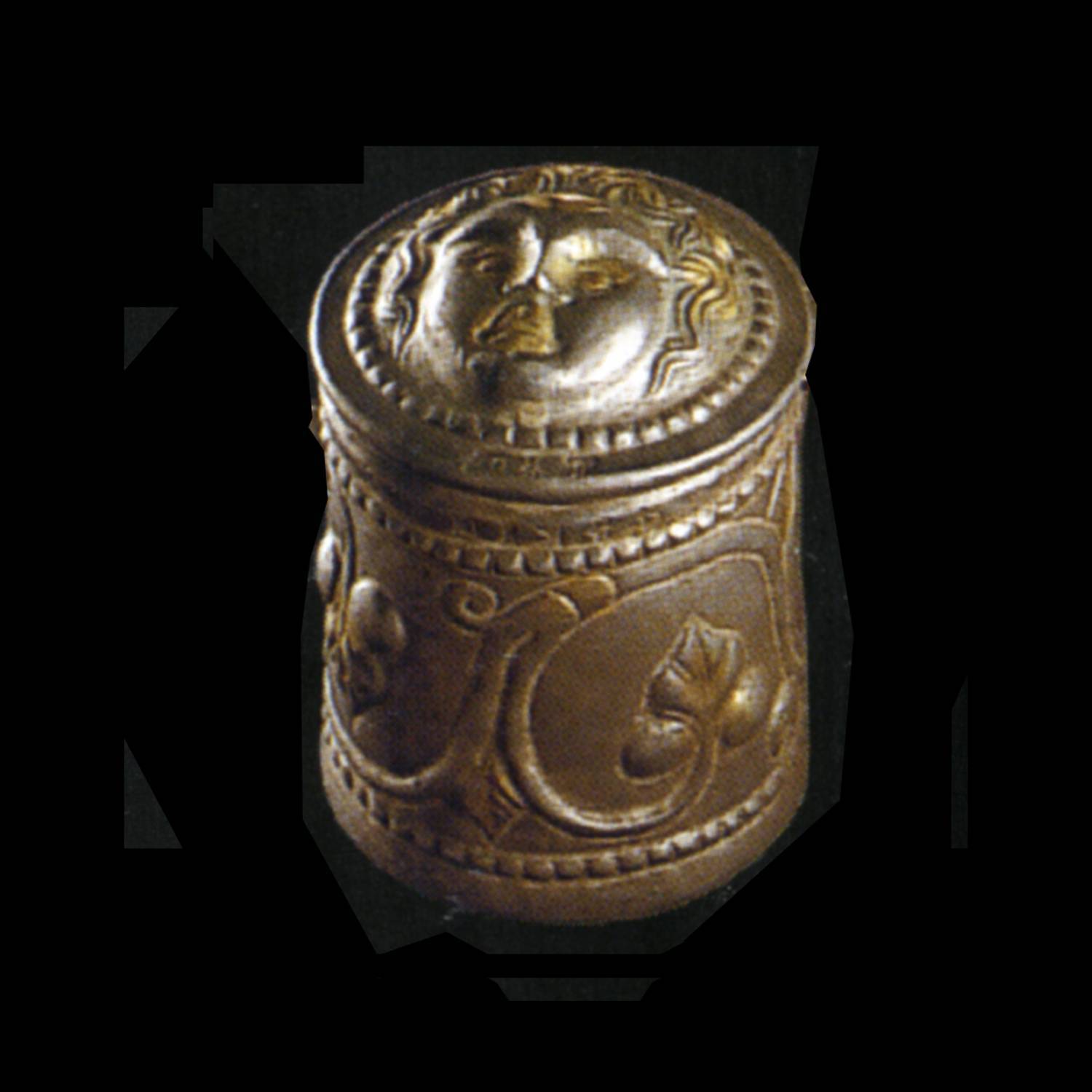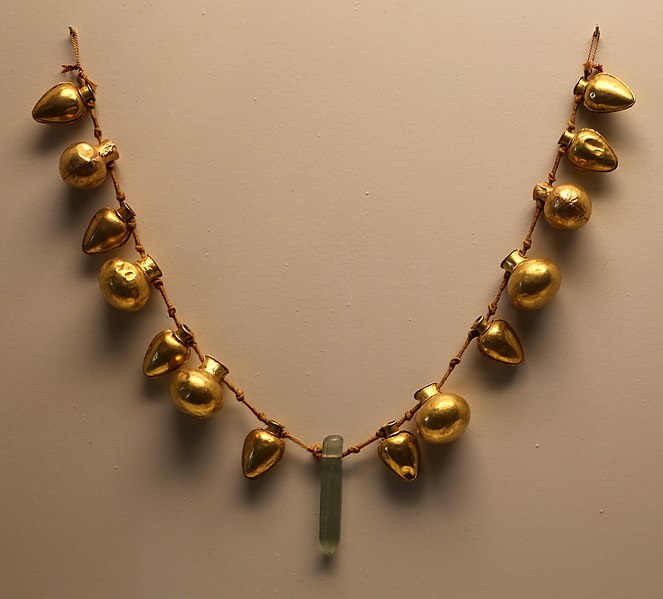


of the Ministero per i Beni e le Attività Culturali e per il Turismo – Museo Archeologico Nazionale di Napoli. Photos by Giorgio Albano. After Anna Willi, 2021
1st century, from a Roman tomb between via Molino a Vento and via dell’Istria
“Inkwell made up of two cylindrical bronze vessels, already joined together, decorated externally with damask engravings in silver with a motif of “sea waves” and a branch of ivy.
The two discs that served as lids had to be applied to a wooden or cork stopper and have a circular opening in the middle through which the pen was dipped, and which in turn was provided with its own lid, fixed with a hinge.”


Drnovo (Slovenia).
National Museum of Slovenia, inv. R 1487, R 634, R
635, R 1038. © National Museum of Slovenia, photo by Tomaž Lauko. After Anna Willi, 2021




From Vaison-la-Romaine, France, 1st/2nd century CE. Height: 4.6 cm [with a lid]; Diameter: 4.7 cm
Louvre, inv. BJ1950
- Manual of Roman everyday writing vol. 2: writing equipment, Nottingham 2021, Anna Willi https://www.academia.edu




